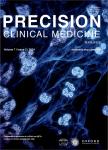Accurate prediction of myopic progression and high myopia by machine learning
作者机构:Guangzhou Women and Children's Medical CenterGuangzhou Medical UniversityGuangzhou 510120China Guangzhou National LaboratoryGuangzhou 510o0oChina Zhuhai International Eye Center of the First Affiliated Hospital of Faculty of MedicineMacao University of Science and TechnologyZhuhai 519000China Beijing Institute of OphthalmologyBeijing Tongren Eye CenterBeijing Tongren HospitalCapital Medical UniversityBeijing 100069China Key Laboratory of MyopiaMinistry of HealthShanghai Key Laboratory of Visual Impairment and RestorationDepartment of OphthalmologyEye InstituteEye and EarNoseand Throat HospitalFudan UniversityShanghai 200031China DongguanPeople's HospitalThe First School of Clinical MedicinelSouthern Medical UniversityDongguan 523059China State Key Laboratory of OphthalmologyZhongshan Ophthalmic CenterSun Yat-sen UniversityGuangzhou 510060China Wenzhou Eye Hospital and Institute for Advanced Study on Eye Health and DiseasesWenzhou Medical UniversityWenzhou 32500oChina
出 版 物:《Precision Clinical Medicine》 (精准临床医学(英文))
年 卷 期:2024年第7卷第1期
页 面:14-20页
学科分类:12[管理学] 1201[管理学-管理科学与工程(可授管理学、工学学位)] 081104[工学-模式识别与智能系统] 08[工学] 1010[医学-医学技术(可授医学、理学学位)] 0835[工学-软件工程] 0811[工学-控制科学与工程] 0812[工学-计算机科学与技术(可授工学、理学学位)] 10[医学]
基 金:supported by the Zhuhai Science and Technology Plan Medical and Health Project (Grant/Award No.ZH2202200033HJL) Macao Science and Technology Development Fund,Macao (0007/2020/AFJ,0070/2020/A2,0003/2021/AKP)
主 题:myopia progression machine learning prevention precision medicine
摘 要:Background Myopia is a leading cause of visual impairment in Asia and ***,accurately predicting the progression of myopia and the high risk of myopia remains a *** study aims to develop a predictive model for the development of *** We first retrospectively gathered 612530 medical records from five independent cohorts,encompassing 227543 patients ranging from infants to young ***,we developed a multivariate linear regression algorithm model to predict the progression of myopia and the risk of high *** The model to predict the progression of myopia achieved an R^(2) value of 0.964 vs a mean absolute error(MAE)of 0.119D[95%confidence interval(CI):0.119,1.146]in the internal validation *** demonstrated strong generalizability,maintaining consistent performance across external validation sets:R^(2)=0.950 vs MAE=0.119D(95%CI:0.119,1.136)in validation study 1,R^(2)=0.950 vs MAE=0.121D(95%CI:0.121,1.144)in validation study 2,and R^(2)=0.806 vs MAE=−0.066D(95%CI:−0.066,0.569)in the Shanghai Children Myopia *** the Beijing Children Eye Study,the model achieved an R^(2) of 0.749 vs a MAE of 0.178D(95%CI:0.178,1.557).The model to predict the risk of high myopia achieved an area under the curve(AUC)of 0.99 in the internal validation set and consistently high area under the curve values of 0.99,0.99,0.96 and 0.99 in the respective external validation *** Our study demonstrates accurate prediction of myopia progression and risk of high myopia providing valuable insights for tailoring strategies to personalize and optimize the clinical management of myopia in children.



